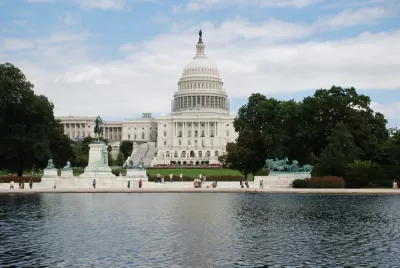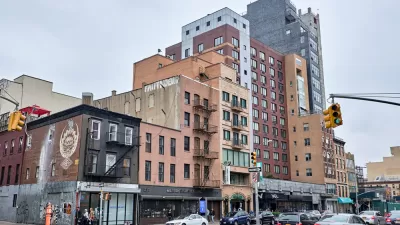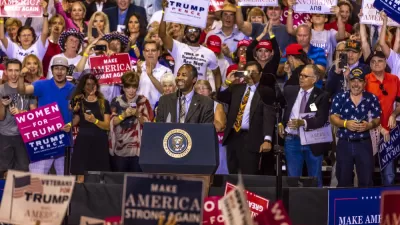A couple of questions are fundamental to the debate about the housing affordability crisis.

[Updated: August 19, 2019]
An article by Solomon Greene raises the question of whether deregulation can solve the affordable housing crisis, and, more specifically, whether the federal government can play a hand in that deregulation.
The Trump administration is making at least initial gestures toward trying to do just that. In June, President Donald Trump signed an executive order establishing the "White House Council on Eliminating Regulatory Barriers to Affordable Housing." Democratic candidates for president are also pushing for fewer regulations as one tool for combating the rising costs of housing. The New York Times Editorial Board yesterday announced its support published an editorial supporting the idea of more construction as one potential solution to housing affordability.
"This embrace of deregulation merits particular praise because the states most resistant to allowing housing construction are the strongholds of the Democratic Party, in the Northeast and along the Pacific Coast, and the most resistant voters are the wealthy residents of those states who provide so much of the funding for Democratic presidential campaigns," according to the editorial.
Returning to the earlier article, Solomon builds a case that the federal government has multiple avenues by which it can influence the housing market, including subsidies, ending or prohibiting exclusionary barriers, identifying the helpful regulations among the harmful, and supporting bottom-up initiatives. On that last point, Solomon writes:
Effective policies will also require a strong emphasis on community engagement from the outset, and ongoing monitoring of implementation and evaluation of outcomes. The federal government used this model under the Sustainable Communities Initiative and began to apply it more broadly through the US Department of Housing and Urban Development’s Affirmatively Furthering Fair Housing rule before Secretary Carson suspended its implementation. Mining lessons from each of these efforts will be key to the success of new initiatives.
FULL STORY: Can We Deregulate Ourselves out of the Affordable Housing Crisis?

Maui's Vacation Rental Debate Turns Ugly
Verbal attacks, misinformation campaigns and fistfights plague a high-stakes debate to convert thousands of vacation rentals into long-term housing.

Planetizen Federal Action Tracker
A weekly monitor of how Trump’s orders and actions are impacting planners and planning in America.

In Urban Planning, AI Prompting Could be the New Design Thinking
Creativity has long been key to great urban design. What if we see AI as our new creative partner?

King County Supportive Housing Program Offers Hope for Unhoused Residents
The county is taking a ‘Housing First’ approach that prioritizes getting people into housing, then offering wraparound supportive services.

Researchers Use AI to Get Clearer Picture of US Housing
Analysts are using artificial intelligence to supercharge their research by allowing them to comb through data faster. Though these AI tools can be error prone, they save time and housing researchers are optimistic about the future.

Making Shared Micromobility More Inclusive
Cities and shared mobility system operators can do more to include people with disabilities in planning and operations, per a new report.
Urban Design for Planners 1: Software Tools
This six-course series explores essential urban design concepts using open source software and equips planners with the tools they need to participate fully in the urban design process.
Planning for Universal Design
Learn the tools for implementing Universal Design in planning regulations.
planning NEXT
Appalachian Highlands Housing Partners
Mpact (founded as Rail~Volution)
City of Camden Redevelopment Agency
City of Astoria
City of Portland
City of Laramie





























